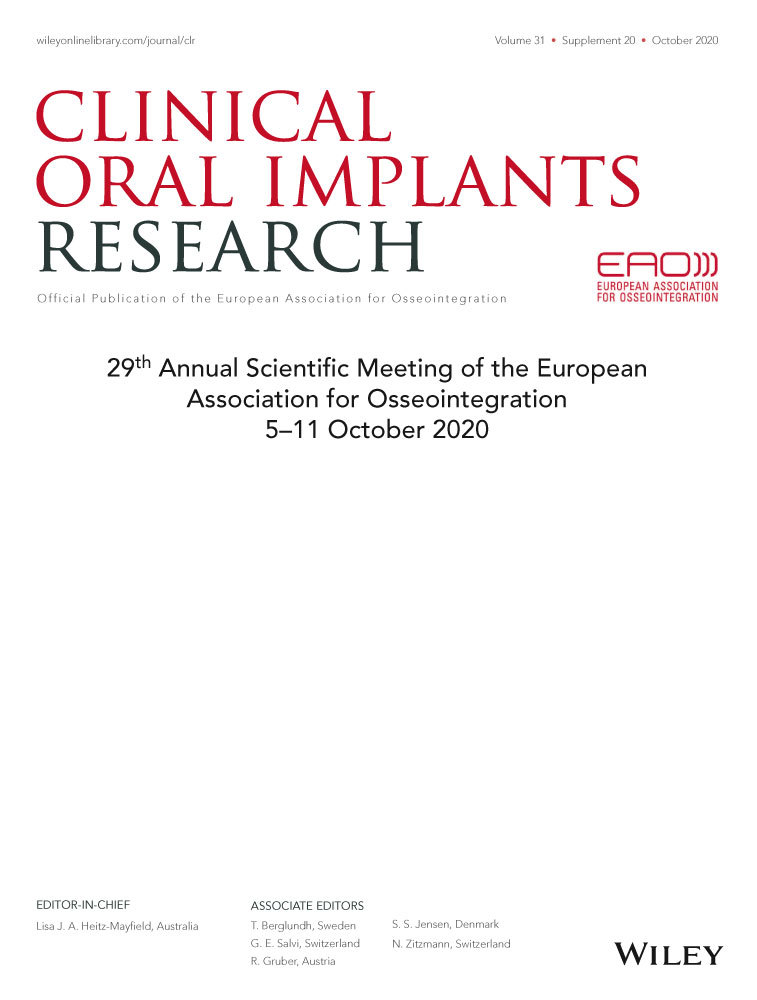Influence of the type of bone substitute materials on the rates of bone regeneration in sinus lift grafting with lateral approach and delayed implant placement
Z71X2 ePOSTER CLINICAL RESEARCH – SURGERY
Background: Dental implantology is the most dynamic area of the dental medicine and today it is an integral part of the daily practice. Often the placement of dental implants must be combined with various augmentation procedures. Such a case is the maxillary sinus floor augmentation, which has been used for occlusal rehabilitation in the posterior maxilla. Different kinds of bone substitute materials have been used to solve the problems with the shortage and quality of the remaining bone in this region.
Aim/Hypothesis: The aim of this research is to follow the rates of bone regeneration in sinus lift grafting with synthetic biphasic calcium phosphate-BoneCeramic, xenogeneic bovine hydroxyapatite-Cerabone and biphasic calcium phosphate paste-Maxresorb inj. using instrumental, histomorphometric and imaging methods.
Materials and Methods: Thirty patients were divided into three equal groups, as each was divided into two subgroups of five people. Each patient underwent a sinus lift with lateral access, and depending on which of the three main groups he fell in, different bone substitute material was used: synthetic biphasic calcium phosphate, xenogeneic bovine hydroxyapatite and biphasic calcium phosphate paste. On the 6th or 9th postoperative month, depending on the subgroup in which each patient falls, a CBCT was performed and the height of the augmented subantral bone was measured. A biopsy was taken using a 4.3 mm trephine bur. The resulting cylINDIAr was fixed in neutral formalin for 24 hours. The sample was stained with a Goldner's Masson trichrome stain, imaged under a scanning microscope and digitized. Staining makes it possible to differentiate mineralized bone by staining it green with NO-mineralized bone, which is stained red. A histomorphometric analysis was performed with the PS CS5 Extended program.
Results: The obtained results were distributed in tables and statistically processed using descriptive analysis, regression analysis, ANOVA analysis of variance and Student's t-test. They showed that the largest total volume of bone tissue (mineralized and NO-mineralized) in the biopsy sample without residual bone was obtained using xenogeneic bovine hydroxyapatite - 15.7%, followed by biphasic calcium phosphate paste - 14.2% and synthetic biphasic calcium phosphate - 8.2%. The highest values of mineralized bone were obtained with xenogeneic bovine hydroxyapatite, while the NO-mineralized bone was the highest with biphasic calcium phosphate paste. From the analysis of the obtained results it is clear that the sex (P = 0.879) and age (P = 0.143) of the patient do not affect the quantity and quality of the newly formed bone. We did not find a relationship between the volume of bone tissue in the biopsy sample and the time elapsed from sinus lift grafting (P = 0.406).
Conclusions and Clinical Implications: In conclusion, we can say that sinus lift grafting with lateral approach can be used with equal success in different age groups and always leads to predictable and stable results over time. Xenogeneic bovine hydroxyapatite is a favourite when choosing a bone substitute material. The lack of a statistically significant difference in the volume of the newly formed bone between the 6th and 9th month gives grounds for earlier placement of dental implants reducing treatment time.
Acknowledgements: I would like to thank my supervisors Prof. T. Georgiev and Prof. St. Peev and MU - Varna for the support, Dr. Zgurova and Dr. Krasnaliev for the great work done and my family for patience!
Keywords: sinus lift, augmentation, histomorphometry, bone substitute material, bone graft




